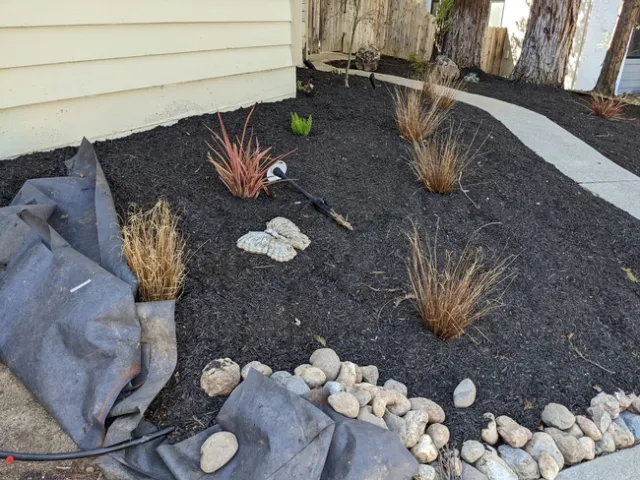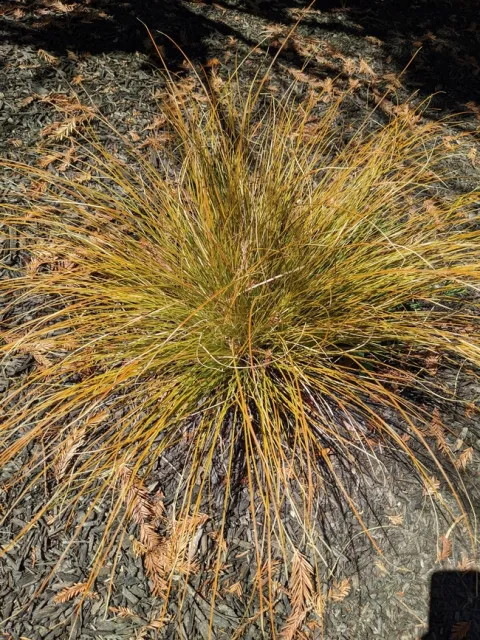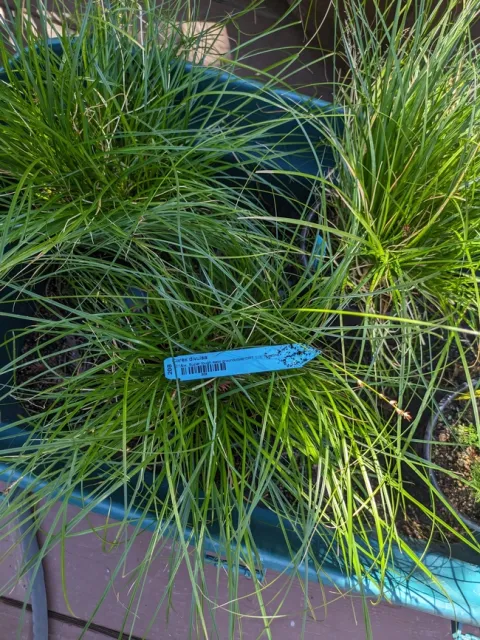“Sedges have edges
… Rushes are round, Grasses have nodes all the way to the ground.”-author unknown.
A little over a year ago we had our front yard re-landscaped and were given the plan. Most of the plants did well, some survived but did not thrive, and some of the plants I thought of as grasses are no more.

The plants I thought were grasses were labeled “sedge; leather leaf or fox red” in the plan, but in the garden, they looked so different!
My husband liked the stiffly upright ones with red tones, which turned out to be Carex buchananii. ‘Leather leaf' and ‘Fox red' are varieties of C. buchananii .
I liked one with yellow-orange tones and a more mounding form.

I liked it so much, I bought C. divulsa, or 'Berkely Sedge.'The one the landscaper installed turned out to be C. testacea 'Prairie Fire'. There is also a Carex tumulicola, the ‘Foothill Sedge,' which was sometimes confused with ‘Berkeley Sedge,' but the former is a native, the latter is not. According to Plantright.org, C. divulsa was included as a potentially invasive plant in the 2014 and 2015 nursery surveys but turned out to have a low-Risk rating.” It is not listed as invasive but does self-sow in the garden.

So, what have I learned? Carex is a genus of 1,500 or more species, most occurring in damp places. It is said there is a Carex species to suit almost any garden situation. Apparently clay soil and full sun is not a good situation for C. buchananii, at least in my yard, C. testacea does okay in my garden, and C. divulsa may self-sow there.
Tor more information about what to avoid and alternatives in the SF Bay area;
https://plantright.org/wp-content/uploads/2019/10/2019-PlantRight_Plant-List.pdf

